Giuseppe Morello was the first known boss of bosses of the American Mafia. While he was a unifying force initially, he later became a central figure in underworld conflicts and was an early casualty of the Castellammarese War.
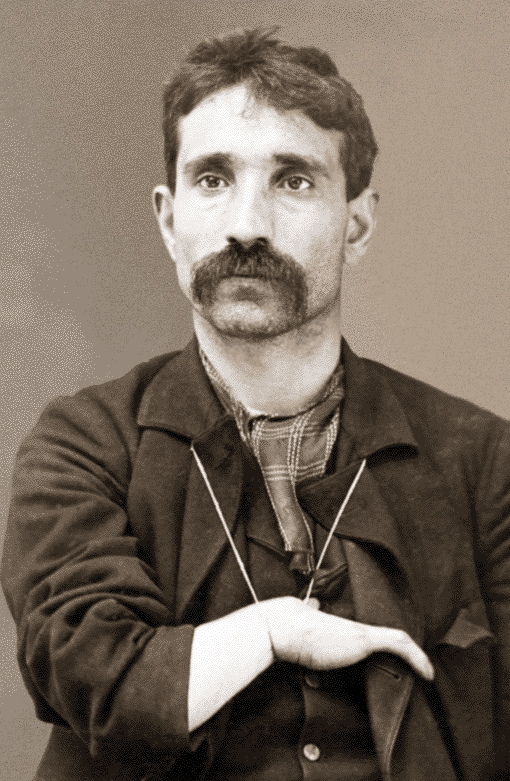
Giuseppe Morello
Morello was born on May 2, 1867, to Calogero and Angela Piazza Morello in Corleone, Sicily. [01] A sister, Maria, was born several years later. Calogero Morello died in the early 1870s, and Angela subsequently married Bernardo Terranova. The couple had three sons, Vincent, Ciro and Nicholas "Coco," and three daughters, Lucia, Salvatrice "Dora," and Rosalia. [02]
A birth defect left Morello with a badly disfigured right hand. The only identifiable digit on that hand was the fourth finger, the rest were curled together into a small knot. [03] The affliction may have provoked fear among superstitious observers in an Italian culture that equated left-handedness with evil. [04]
As a young man, Giuseppe Morello became a member of a Corleone Mafia faction commanded by Paolino Streva. By 1889, Morello was a trusted lieutenant of Streva. At that time, local police official Giovanni Vella prepared to prosecute Streva but was shot down in the streets before he could do so. Witness Anna DiPuma reported seeing Morello in the area when Vella was murdered. DiPuma, too, was soon dead of gunshot wounds.
Fearing prosecution, Morello left for the United States. His associates in Corleone fixed things so a Vella political opponent, Francesco Ortonello, was convicted and sentenced to life imprisonment for the murder of Vella. [05] Later, an Italian court tried and convicted Morello in absentia for counterfeiting and fraud. The court sentenced him to six years and 45 days of solitary confinement and a fine of 5,000 francs. It also stripped him of the right to hold any public office in Italy. [06] This was of small consequence to him on the other side of the Atlantic.
Morello had reached New York City around September of 1892. He was joined there roughly six months later by the rest of the Morello-Terranova clan, including Morello's wife Rosa Marvalesi (possibly Marsalisi) Morello and their young son Calogero. [07] Early in 1894, the family decided to relocate to Louisiana, where relatives and friends from Corleone resided. There they worked on a sugar cane plantation. The next year, the Morellos and Terranovas decided to pursue a cotton farming opportunity in the community of Bryan, Texas. Members of the family became seriously ill with malaria while in Texas. It is possible that Rosa Marvalesi Morello died there. Early in 1897, the clan retraced its steps and settled back in New York City. [08]
Morello dabbled in a number of businesses - coal, saloons, date factory, restaurant, oil, lathing and plastering [09] - but he primarily earned his living through underworld rackets, such as Black Hand extortion and counterfeiting.
Counterfeiting had been practiced by various New York Mafiosi and their associates for years. Just as Morello was returning to New York City, Mafia bosses Candelero Bettini and Nicholas Taranto were sent to prison for wholesaling phony bills to associates who passed them in the community. [10]
Morello and Calogero Meggiore were arrested in 1900 on charges of passing counterfeit $5 U.S. notes. (Authorities were also concerned about the reported disappearance of a woman named "Mollie" Callahan, who had been employed by Morello as a servant and disappeared. They feared she had stumbled onto Morello's counterfeiting activities and was eliminated. Morello was not charged with wrongdoing toward Callahan, possibly because authorities noted a Margaret Callahan among Morello's counterfeiting associates.) Meggiore was sentenced to six years in prison for his role in the counterfeiting racket, but Morello was discharged. [11]
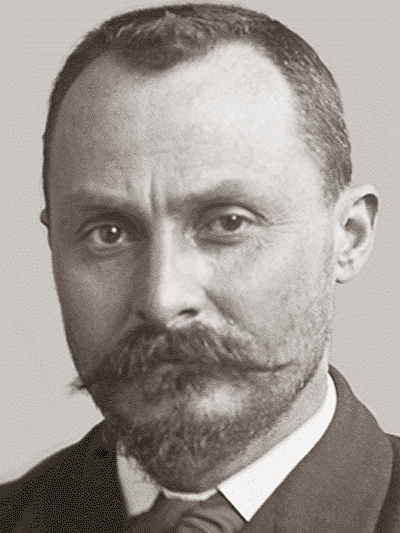
Vito Cascio Ferro
In September of 1901, influential Sicilian Mafioso Vito Cascio Ferro visited New York [12] and likely assisted in uniting the Mafia families in the U.S. into a national network with Morello installed as boss of bosses to oversee operations and resolve any disputes.
Cascio Ferro had a couple of close calls with law enforcement during his stay. He was arrested with a group of counterfeiters in May 1902 but managed to avoid prosecution. [13]
Police sought to arrest Cascio Ferro in April 1903 when they learned that a dead man found stuffed in a barrel on the sidewalk had been observed with the Morello gang the night before. Cascio Ferro slipped away to New Orleans and then traveled back to Sicily. Morello and a number of associates, including Brooklyn and Manhattan racketeer Ignazio Lupo, were arrested in connection with the Barrel Murder. However, none could be successfully prosecuted. Authorities determined that the Barrel Murder victim was Buffalo, New York, resident Benedetto Madonia, a brother-in-law of imprisoned Morello gang counterfeiter Giuseppe DePrima, who was believed to have betrayed the gang. [14]
The U.S. Secret Service was having some luck dismantling the Morello counterfeiting operation. Several gang members were imprisoned in 1903 after being caught passing counterfeit bills, and a number of counterfeiters were secretly informing on the gang. [15]
Morello remarried in September 1903, taking Nicolina Salemi (who had been brought over from Sicily by Morello's sister Marietta Morello Lima) as his wife. [16] Soon after, two of Morello's half-sisters married. Salvatrice "Dora" became the bride of Mafioso Ignazio "the Wolf" Lupo, and Lucia married Nicolina Salemi's brother Vincenzo. [17] In December of 1904, daughter Angelina was born to Giuseppe and Nicolina Salemi Morello. [18]
The other 'Mrs. Morello'
At the time of the barrel murder, Morello was romantically involved with a woman the authorities referred to as "Mrs. Morello." They were not married. They lived together in an apartment at 178 Chrystie Street in Manhattan and had a daughter together around 1902.
When Secret Service agents and detectives searched that apartment following Morello's barrel murder arrest, one noticed "Mrs. Morello" stashing a pile of letters in her baby's clothing. The letters were retrieved and turned out to contain some written by Morello to the leaders of the Chicago and New Orleans Mafia organizations.
By the summer of 1903, there were plans for Morello to marry again, but not to this woman. (His sister was bringing Nicolina Salemi from Sicily to be his bride.) Morello managed somehow to extricate himself from the relationship but needed to find a home for the little girl. The Romano family of East 106th Street agreed to take the child in. She died about a year later, after suffering with measles and pneumonia. [45]
Morello launched a new racket, an investment scheme. He created the Ignatz Florio Co-Operative Association Among Corleonesi corporation with the outward purpose of buying land around the city and constructing apartment houses. Italian immigrants purchased shares of the company and saw some early successes. Over time, however, contractors went unpaid and properties were heavily mortgaged. Finally, the association collapsed under the weight of liens, foreclosures and lawsuits. [19]
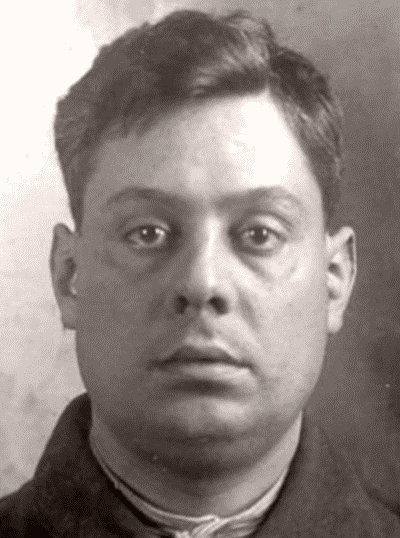
Ignazio Lupo
Late in 1908, Morello joined with Lupo, who faced charges in connection with the financial failure of a wholesale grocery business, in the launch of a large-scale operation for the counterfeiting of U.S. and Canadian paper money. As the printing of bills got under way in rural Highland, New York, the Morello gang reportedly became aware of a trip by New York Police Lieutenant Joseph Petrosino to Italy. Members discussed the trip before it became common knowledge and expressed their certainty that Petrosino, an able and determined fighter of Italian organized crime, would be assassinated. They then celebrated weeks later when they learned that Petrosino had been shot to death in Palermo. [20] Italian police suspected Morello's old underworld ally Vito Cascio Ferro of planning and possibly executing the assassination of Petrosino for the benefit of the New York Mafiosi. [21]
The following month, another daughter, Carmela, was born to Giuseppe and Nicolina Salemi Morello. [22]
As the new counterfeit bills surfaced, the Secret Service located and arrested the street-level "pushers" of the bills and some of those provided information against the rest of the gang. In November of 1909, Morello, Lupo and a large number of gang members were arrested in Secret Service raids. As Morello was taken into custody, agents found in his apartment a collection of letters relating to his administration of Mafia business in Chicago and New Orleans and to Black Hand extortion operations. [23] The Secret Service secured the cooperation of a printer, Antonio Comito, who had been engaged in producing the counterfeit money. Largely on the basis of the printer's testimony, Morello, Lupo and others were convicted in February, 1910, of counterfeiting. Morello was sentenced to 25 years in federal prison. Lupo got 30 years. [24] The two brothers-in-law, leaders of the Mafia counterfeiting band, entered Atlanta Federal Penitentiary on Feb. 20, 1910. [25]
For a time, Morello managed underworld affairs from within Atlanta Federal Prison. Brooklyn Mafia boss Sebastiano DiGaetano appears to have served as an interim capo dei capi but quickly decided he could not handle the job and retired. In 1912, Mafia leaders selected a new boss of bosses, former Morello lieutenant Salvatore "Toto" D'Aquila. Based in Brooklyn, D'Aquila strengthened his grip on power by inserting spies into Mafia organizations across the country and by dealing harshly with those who proved disloyal. D'Aquila was most powerful within Brooklyn and the Bronx. His efforts to take over rackets in East Harlem and Lower Manhattan were met with determined opposition from Morello loyalists and independent racketeers. [26]
There was a great deal of bad news for the Morello-Terranova clan while Morello was in prison, and he was likely was kept informed of it all by his visitors. His son, Calogero, was killed in a gang gunfight in East Harlem on April 16, 1912. [27] On May 23, 1914, East Harlem Mafia leader Charles Lomonte was shot down at the corner of Second Avenue and 108th Street. The gunman was Umberto Valente, an assassin sent by D'Aquila. Lomonte died of his wounds at Harlem Hospital the next day. The following year, two of Lomonte's close associates - business partner Ippolito Greco and Lomonte's brother Thomas - were also murdered.[28] The Terranova brothers of East Harlem went to war with a Neapolitan Camorra group in Brooklyn in 1916. Morello's half-brother Nicholas Terranova was killed as he arrived in Brooklyn for a supposed peace conference on Sept. 7 of that year. [29]
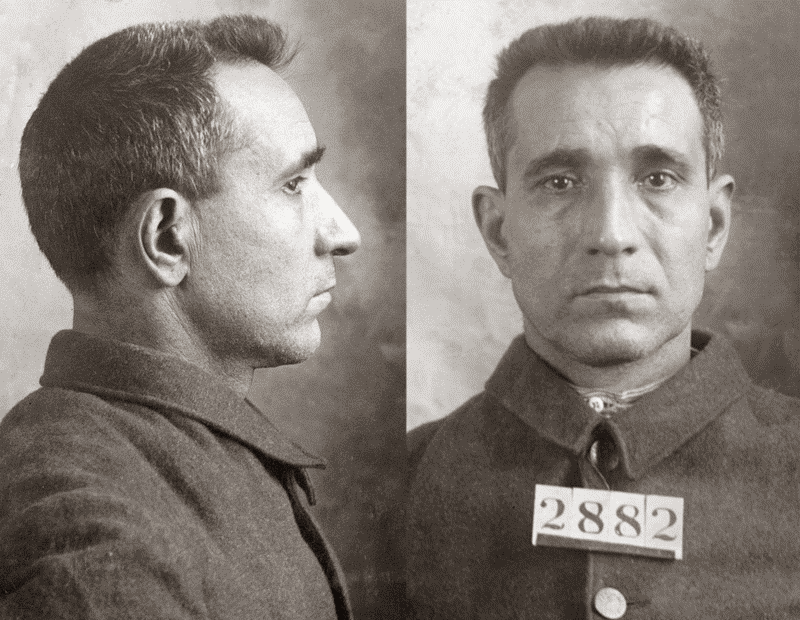
Giuseppe Morello
Morello attorneys managed to secure a commutation of Morello's sentence to 15 years. With allowance for "good time," his sentence expired on March 18, 1920, and he was released. A few months later, Ignazio Lupo was released on parole. [30] The sudden return of the Mafia leaders to New York City represented a threat to D'Aquila. The reigning boss of bosses sent up a conflict with Morello and Mafia leaders loyal to him and, at their first sign of disrespect, passed death sentences against Morello and 11 other men.
Morello, Lupo and some of the other condemned Mafiosi left the U.S. for a time, seeking support from underworld figures in Sicily. [31] Though temporarily rid of those rivals, D'Aquila found in 1922 that he faced new opposition in Manhattan. A rising Mafiosi named Giuseppe Masseria united D'Aquila opponents. Another Mafia feud broke out.
On May 8, 1922, Morello half-brother Vincent Terranova was shot to death at 116th Street and Second Avenue. D'Aquila gunmen were likely responsible. Later that day, a gunfight broke out at Grand Street near Mulberry in lower Manhattan. Several people were wounded, and one man, Silvio Tagliagambe, later succumbed to his wounds. [32]
Three months later on Aug. 8, D'Aquila gunman Umberto Valente caught Masseria alone as he stepped out of his home on Second Avenue. But the practiced assassin missed every shot he took at Masseria and used a waiting automobile to flee the scene. Valente was called to a peace conference with Masseria representatives on Aug. 11. The conference was held on the sidewalk at 12th Street and Second Avenue. Valente soon learned that he had been set up by Masseria and betrayed by some of his own men. Valente ran out into the intersection, as a number of his companions drew handguns and shot at him. He fell mortally wounded into the street. [33]
Masseria became the unrivaled Mafia boss of Manhattan and incorporated elements of the former Morello-Terranova crime family into his organization. Giuseppe Morello became Masseria's senior adviser. [34]
Though he retained his boss of bosses title, D'Aquila's power waned, and about 1925 he retreated from Brooklyn to the Bronx. On Oct. 10, 1928, he was murdered on Manhattan's Avenue A near 13th Street. Giuseppe Masseria was subsequently chosen to fill the boss of bosses role. [35]
Giuseppe "Joe the Boss" Masseria had made many enemies, and he succeeded in turning much of the Mafia of the U.S. Midwest against him when he sided with Chicago's Al Capone in a dispute and ordered the murders of Detroit boss Gaspare Milazzo and Bronx boss Gaetano Reina. [36] An extensive network of Mafiosi originally from Castellammare del Golfo, Sicily, opposed Masseria, causing the boss of bosses to threaten all Castellammaresi with death. A secret uprising against Masseria began. [37]
As Masseria began to perceive the opposition, he appeared to blame it on Buffalo Mafia boss Stefano Magaddino and called Magaddino to appear before him. Magaddino claimed he was ill and could not come. Masseria called in two close Magaddino allies - Salvatore Maranzano and Joseph Bonanno - to express his displeasure. He likely had no idea at that moment that Maranzano was the actual organizer of the anti-Masseria rebels.
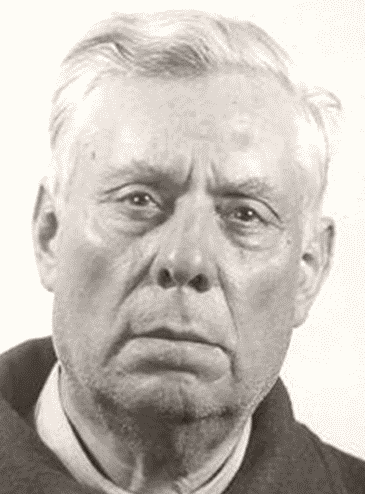
Ignazio Lupo
Giuseppe Morello attended the meeting and spoke for Masseria. He urged Maranzano to persuade Magaddino to meet with "Joe the Boss" and resolve their differences. Morello also warned Maranzano that he should opt for the safety of neutrality if war should break out between Masseria and Magaddino. [38]
Maranzano was ready for war, however, and Morello, then 63 and perhaps overconfident, was not. On Aug. 15, 1930, two gunmen from Maranzano's rebel faction pushed their way into Morello's offices at 352 East 116th Street. Morello and an office visitor were killed. Another visitor was seriously wounded. [39]
The Maranzano faction was victorious in the so-called Castellammarese War after Masseria's top men betrayed and murdered him in April 1931. [40] Morello half-brother Ciro Terranova was said to have a minor role in that assassination. Maranzano took for himself the title of boss of bosses and became every bit as abusive of his authority as Masseria ever had been. In September 1931, Maranzano became the third "capo dei capi" to be murdered in a 13-month period (the fourth dating back to D'Aquila's murder late in 1928). Not surprisingly, the leaders of the American Mafia discarded the role of boss of bosses following Maranzano's death and opted to resolve inter-family disputes through a representative commission. [41]
Morello brother-in-law Ignazio Lupo was returned to prison in in the summer of 1936, after President Franklin Roosevelt found that he had violated the conditions of the Harding Administration commutation. [42] Ciro Terranova, survivor of all the gangland violence that claimed the lives of his brothers and his half-brother, died of natural causes on Feb. 18, 1938. [43] Ignazio "the Wolf" Lupo, one of the early organizers of the Mafia in the United States, was discharged from prison on Dec. 21, 1946. The prison provided him with a $15 gratuity and transportation to New York City. Lupo by then was showing signs of senility and had become physically frail. He died a few weeks after his release, on Jan. 13, 1947. [44]
Related items on this website:
- The Barrel Mystery (1919) by William J. Flynn.
- Memoirs of a Murder Man (1930), Chapter X, by Arthur A. Carey.
- Autobiography: The Real Thing by Joseph Valachi.
- Badges in Little Italy: New York's Italian Squad.
Notes
01 U.S. Census of 1910, Georgia, Fulton County, South Bend District, Enumeration District 131; Prisoner's Criminal Record, Bureau of Detectives, Police Department of the City of New York, Giuseppe Morello Prison File, #2882, Atlanta Federal Prison, NARA.
02 Passenger manifest of S.S. Alsatia arrived New York City on March 8, 1893; U.S. Census of 1910, New York State, New York County, Enumeration District 345; U.S. Census of 1920; U.S. Census of 1930, New York State, Kings County, Assembly District 16, Enumeration District 1356; U.S. Census of 1940, New York State, Kings County, Assembly District 16, Enumeration District 1817.
03 "Counterfeiters cut throat of the man whose body was packed in barrel of sawdust," New York Press, April 16, 1903, p. 1; "150 years in all for the Lupo gang," New York Times, Feb. 20, 1910, p. 1; "Law's limit given," Washington D.C. Evening Star, Feb. 20, 1910, p. 5; Physician's Examination of Convict, Feb. 22, 1910, Giuseppe Morello Prison File, #2882, Atlanta Federal Prison, NARA.
04 The same word, "sinistro," means both "left" and "sinister." The Italian term for "left-handed" may be either "sinistrorso" (a derivative of sinistro) or "mancino" (a synonym for dishonest).
05 Flynn, William J., "Black-Hand propaganda," Charlotte NC News, April 11, 1920, p. Features-1; Flynn, William J., The Barrel Mystery, New York: James A. McCann Company, 1919, p. 248-259.
06 Prisoner's Criminal Record, Bureau of Detectives, Police Department of the City of New York, Giuseppe Morello Prison File, #2882, Atlanta Federal Prison, NARA.
07 Passenger manifest of S.S. Alsatia arrived New York City on March 8, 1893; Ciro Terranova testimony, United States v. Giuseppe Calicchio et al., U.S. Circuit for the Southern District of New York, Criminal Case 2-347, January-February 1910.
08 Ciro Terranova testimony, United States v. Giuseppe Calicchio et al., U.S. Circuit for the Southern District of New York, Criminal Case 2-347, January-February 1910. The return of Rosa Marvalesi (Marsalisi) to New York was not noted.
09 Ciro Terranova testimony, United States v. Giuseppe Calicchio et al., U.S. Circuit for the Southern District of New York, Criminal Case 2-347, January-February 1910.
10 "Thousands in bad bills," New York Times, Jan. 17, 1896, p. 1; "Charged with having bad bills," New York Tribune, June 26, 1896, p. 13; "Counterfeiters sentenced," Brooklyn Daily Eagle, June 28, 1896, p. 4; "Counterfeiters sentenced," Chicago Inter Ocean, Oct. 30, 1888, p. 1; "Threatened with death," Chicago Daily Tribune, Oct. 30, 1888, p. 5; "Italian criminals," Los Angeles Herald, Oct. 30, 1888, p. 4; Daily reports of G. Ray Bagg, U.S. Secret Service, Department of the Treasury, R.G. No. 87, T915-16, NARA.
11 "Raid on counterfeiters," New York Times, June 12, 1900, p. 14; "Said to have passed bad money," New York Tribune, June 12, 1900, p. 9; "Charged with passing bad money," New York Tribune, June 22, 1900, p. 10; "Sentenced for passing counterfeits," New York Tribune, June 30, 1900, p. 11.
12 Passenger manifest of S.S. La Champagne, arrived New York City Sept. 30, 1901.
13 "Women coiners captured in raid on gang and plant," New York Evening World, May 22, 1902, p. 3; "Catch six counterfeiters," New York Tribune, May 23, 1902, p. 6; "Bogus silver pieces found in counterfeit raid," New York Times, May 23, 1902, p. 2; "Motherly look belied record," New York Press, May 23, 1902; Gentile, Nick, with Felice Chilante, Vita di Capomafia, Rome: Crescenzi Allendorf, 1993, p. 70-71.
14 Flynn, William J., Daily Reports, April 13-14, 16, 21, 1903, Department of the Treasury, United States Secret Service Daily Reports, R.G. No. 87, Roll 109, Vol. 9, NARA; "Slain man in a barrel; may be a Brooklyn crime," Brooklyn Daily Eagle, April 14, 1903, p. 1; "Man in barrel was tortured, then murdered," New York World, April 14, 1903, p. 1; "Killed and packed in barrel," New York Sun, April 15, 1903, p. 1; "Mafia murder victim," New York Tribune, April 15, 1903, p. 1; "Counterfeiters cut throat of the man whose body was packed in barrel of sawdust," New York Press, April 16, 1903, p. 1; "Twelve suspects held in barrel murder case," Brooklyn Daily Eagle, April 16, 1903, p. 22; "Man found in barrel known," New York Sun, April 21, 1903, p. 1; "Madonia's knowledge cost him his life," Washington D.C. Times, April 21, 1903, p. 1; Dickie, John, Cosa Nostra: A History of the Sicilian Mafia, New York: Palgrave Macmillan, 2004, p. 168-169; Petacco, Arrigo, translated by Charles Lam Markmann, Joe Petrosino, New York: Macmillan Publishing Co., 1974, p. 94.
15 U.S. v. Giuseppe Giallonbardo, et al., U.S. Circuit Court of Appeals for the Southern District of New York, Criminal Case File C-2932, 1905; Flynn, William J., Daily Reports, Department of the Treasury, United States Secret Service Daily Reports, R.G. No. 87, Roll 109, Vol. 9, NARA; Sing Sing Prison Admission Registers of Isidore Crose, No. 54087, Joseph DePriemo, No. 54088, Giuseppe Giallambardo, No. 54089, March 17, 1903, New York State Archives.
16 Passenger manifest of S.S. Sardegna, arrived New York City on Sept. 23, 1903; Nicolina Salemi Naturalization Petition, 426441, approved Oct. 27, 1942, U.S. District Court for the Southern District of New York.
17 Lupo, Salvatrice, letter to Myrl E. Alexander, July 1936, Ignazio Lupo Prison File, #2883, Atlanta Federal Prison, NARA; Index to New York City Marriages, certificate no. 249, Dec. 27, 1903.
18 Nicolina Salemi Naturalization Petition.
19 Flynn, William J., "Black Hand series," New York Herald, April 26, 1914, p. Mag 3; New York State Supreme Court, Appellate Division - First Department, John A. Philbrick & Bro. v. The Ignatz Florio Co-Operative Association Among Corleonesi, et al., Papers on Appeal from Order, Walton NY: The Reporter Co., 1910, p. 14; Moyer, William H., letter to Carmine Altieri, Aug. 27, 1912, Giuseppe Morello Prison File, #2882, Atlanta Federal Prison, NARA.
20 Flynn, The Barrel Mystery, p. 112-113, 132-133; Petacco, Joe Petrosino, p. 145-147; Pitkin, Thomas Monroe and Francesco Cordasco, The Black Hand: A Chapter in Ethnic Crime, Totowa NJ: Littlefield, Adams & Co., 1977, p. 110-112; "Counterfeitmaking on a river farm," New York Times, Jan. 28, 1910, p. 3; "Secret service formed to hunt the Black Hand," New York Evening World, Feb. 19, 1909, p. 6; "Secret police fund," New York Tribune, Feb. 20, 1909, p. 5; "Bingham gets his fund," New York Sun, Feb. 20, 1909, p. 3; "New secret service to fight Black Hand," New York Times, Feb. 20, 1909, p. 2.
21 Petacco, Joe Petrosino, p. 175; "Petrosino's slayer may be in custody," New York Times, April 7, 1909, p. 4; Nelli, Humbert S. The Business of Crime: Italians and Syndicate Crime in the United States, Chicago: The University of Chicago Press, 1981, p. 97.
22 Nicolina Salemi Naturalization Petition.
23 Flynn, William J., Daily Reports, Department of the Treasury, United States Secret Service Daily Reports, R.G. No. 87, T915-116, Vol. 28, NARA; Flynn, The Barrel Mystery, p. 206-214.
24 Flynn, The Barrel Mystery; Flynn, William, Daily Report, Sep. 10, Nov. 15-16, Dec. 20, 1909, Jan. 4, 12-13, Feb. 19, 1910, Department of the Treasury, United States Secret Service Daily Reports, R.G. No. 87, Vol. 27-29, NARA; "Long jail terms," New York Tribune, Feb. 20, 1910, p. 1; "150 years in all for the Lupo gang," New York Times, Feb. 20, 1910, p. 1; "Law's limit given," Washington D.C. Evening Star, Feb. 20, 1910, p. 5; "30 years for 'Wolf,'" Washington Post, Feb. 20, 1910, p. 1. Information supplied by imprisoned counterfeiter Vincenzo Battaglia appears to have put the Secret Service on the trail of the leaders of the counterfeiting operation. Antonio Comito was a willing and convincing witness against the gang.
25 Giuseppe Morello Prison File, #2882, Atlanta Federal Prison, NARA; Ignazio Lupo Prison File, #2883, Atlanta Federal Prison, NARA.
26 Gentile, Vita di Capomafia, p. 70-72, 77; Flynn William, Daily Report, Feb. 21, 24, March 25, 1912, Department of the Treasury, United States Secret Service Daily Reports, R.G. No. 87, T915-591, Vol. 34.
27 "Three gunmen fight until all are down," New York Times, April 17, 1912, p. 24; Flynn, William, Daily Report, April 30, 1912, Department of the Treasury, United States Secret Service Daily Reports, R.G. No. 87, Vol. 35, NARA.
28 Gentile, p. 78; "Passersby shot in duel," New York Sun, May 24, 1914, p. 7; Thomas, Rowland, "The rise and fall of Little Italy's king," Fort Wayne IN Journal-Gazette, Dec. 12, 1915, p. 33; "Knife of slayer stays Mafia secret," New York Tribune, May 24, 1914, p. 1; "Shoots man and woman and makes his escape," New York Evening World, May 23, 1914, p. 2; "Lamonte dies of shot wound," New York Sun, May 25, 1914, p. 5; "$5,000 was raised for Baff killing, gunmen confess," New York Evening World, Feb. 11, 1916, p. 3; "Patriotism, pacifism, anarchism, meet here," New York Times, Jan. 6, 1918, p. 54; "Killed by feudists, as his brother was," New York Sun, Oct. 14, 1915, p. 5.
29 "2 die is pistol fight in Brooklyn street," New York Times, Sept. 8, 1916, p. 18; "Two gunmen killed in feud on street," New York Sun, Sept. 8, 1916, p. 3; "Says Vollero urged gangs to violence," Brooklyn Daily Eagle, March 7, 1918, p. 4; Valachi, Joseph, The Real Thing, Second Government: The Expose and Inside Doings of Cosa Nostra," unpublished manuscript, Joseph Valachi Personal Papers, John F. Kennedy Presidential Library and Museum, 1964, p. 146-147.
30 Finch, James A., warrant for commutation of sentence, Jan. 8, 1918, Giuseppe Morello Prison File; Record of Giuseppe Morello, March 18, 1920, Giuseppe Morello Prison File; Roosevelt, Franklin, order returning Ignazio Lupo to prison, July 10, 1936, Ignazio Lupo Prison File.
31 Gentile, p. 70-71.
32 "Gunmen kill cousin of 'Lupo the Wolf,'" New York Times, May 9, 1922, p. 3; "Girl, woman, 4 men shot in battle of two bootleg bands," New York Times, May 9, 1922, p. 1; "Bootleg gangs fire 60 shots in crowd after Harlem murder," New York Evening World, May 9, 1922, p. 2.
33 "Gunmen shoot six in East Side swarm," New York Times, Aug. 9, 1922, p. 1; "Eight men shot in mysterious battle on street," Brooklyn Daily Eagle, Aug. 8, 1922, p. 1; "Gunman's volley fatal to striker," New York Times, Aug. 10, 1922, p. 13; "Cloakmaker, victim of gunman, dies; 3 more in hospital," Brooklyn Daily Eagle, Aug. 9, 1922, p. 20; "1 dead, 2 shot, as bootleggers again fight on East Side," Brooklyn Daily Eagle, Aug. 11, 1922, p. 1; "New Haven girl wounded in New York bootleggers' feud," Bridgeport CT Telegram, Aug. 12, 1922, p. 1; "Gang kills gunman; 2 bystanders hit," New York Times, Aug. 12, 1922, p. 20; Gentile, p. 87.
34 Bonanno, Joseph, with Sergio Lalli, A Man of Honor: The Autobiography of Joseph Bonanno, New York: Simon and Schuster, 1983, p. 84-85, 98, 100; Valachi, The Real Thing," p. 275.
35 Gentile, p. 87; "Three slay man in street and flee," New York Times, Oct. 11, 1928, p. 20; "Importer shot nine times," New York Times, Oct. 12, 1928, p. 22; Death Certificate of Salvatore D'Aquila; Flynn, James P., "La Cosa Nostra," FBI Report no. 92-6054-324, NARA Record no. 124-10278-10231, July 1, 1963, p. 12.
36 Bonanno, A Man of Honor, p. 87-88, 93; Gaspari Milazzo death certificate, Michigan Department of Health Division of Vital Statistics, Reg. No. 7571, June 1, 1930; "Riddled by lead slugs," Detroit Free Press, June 1, 1930, p. 1; "Wealthy ice dealer slain in doorway," New York Times, Feb. 27, 1930, p. 3.
37 Bonanno, A Man of Honor, p. 103; Gentile, p. 102.
38 Bonanno, A Man of Honor, p. 98-101.
39 Valachi, "The Real Thing" p. 275; "Harlem racket gang murders two in raid," New York Times, Aug. 16, 1930, p. 1; Bonanno, A Man of Honor, p. 107.
40 Flynn, James P., "La Cosa Nostra," FBI Report no. 92-6054-324, NARA Record no. 124-10278-10231, July 1, 1963, p. 14; Bonanno, p. 122; Gentile, p. 117.
41 Gentile, p. 124; Bonanno, A Man of Honor, p. 136-141; Flynn, James P., "La Cosa Nostra," FBI Report no. 92-6054-324, NARA Record no. 124-10278-10231, July 1, 1963, p. 9, 16-17.
42 Kelly, John J., certification of U.S. Marshal for the Southern District of New York, July 16, 1936, Ignazio Lupo Prison File, #2883, Atlanta Federal Prison, NARA; "Prison shuts again on Lupo the Wolf," New York Times, July 16, 1936, p. 1.
43 "Terranova dead; once racket 'king,'" New York Times, Feb. 20, 1938, p. 26.
44 Gottshall, A.E., letter to U.S. board of parole, Dec. 18, 1946, Ignazio Lupo Prison File; Release Progress Report, Feb. 19, 1947, Ignazio Lupo Prison File; New York City Death Index, 1862-1948.
45 Flynn, The Barrel Mystery, p. 177-179; Flynn, William J., Daily Report, April 2, 1903, Department of the Treasury, United States Secret Service Daily Reports, R.G. No. 87, Roll 109, Vol. 9, National Archives.